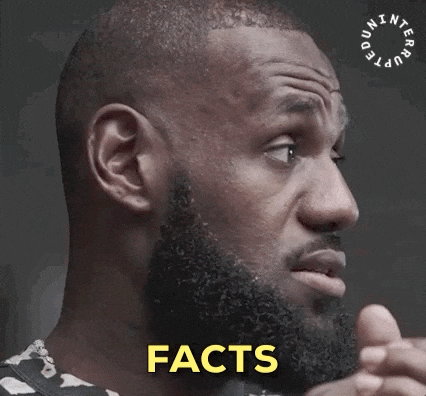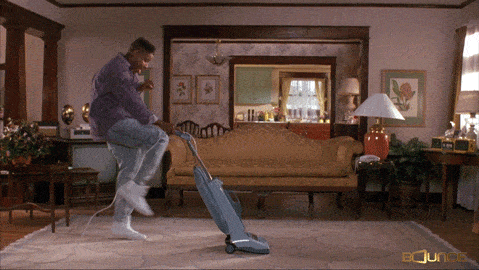- The Mind, Explored.
- Posts
- The Secret to Sustainable Success
The Secret to Sustainable Success
Function at 80% capacity to unlock more breakthrough opportunities.

LeBron James is a Master of athletic longevity. In his 21st season, he is still performing at the highest level and continues to extend his record for most points scored in the NBA.
In this podcast clip, fellow NBA player Spencer Dinwiddie shared his theory on LeBron’s secret to sustainable success:
LeBron never gets hurt is because he’s never redlining.
He may do athletic plays that look like, on a scale of 1 - 10, a 12. But if he can really do a 15, then he’s not redlining. But if you’re always at that point of exhaustion, if you’re always jumping your max height, I feel like you get hurt.
(LeBron) just (doesn’t) break the same way other people do.
The term redlining comes from pushing a car engine to its maximum RPM (Revolutions Per Minute), which is indicated by a red line on the metre.
Redlining has been adopted metaphorically to describe unsustainably operating at maximum capacity.

Insight:
If we constantly function at 100% capacity, we put ourselves at risk of “breaking” when unexpected challenges inevitably arise.
With no capacity in reserve, we also close ourselves off to fresh ideas that could inspire our best work.
3 benefits of functioning at 80% capacity:
Pushing ourselves to 80% capacity enables us to perform more consistently, which in the long run compounds for greater returns than interrupted bursts of energy.
The 20% we keep in reserve enables us to make the most of new opportunities, new sparks to fly, and new material to create with.
We give ourselves a buffer to deal with unexpected challenges, such as helping a friend in need without sacrificing our own needs.
Google certainly agrees, encouraging their employees to spend 20% of their time working on “what they think will most benefit Google.” The founders explain that this “empowers them to be more creative and innovative.”
80% capacity through 80% intensity:
Just like LeBron, we can avoid redlining by making sure that we don’t push ourselves to a point of exhaustion.
An example of this is Zone 2 cardio, which is a type of cardiovascular exercise that you can perform while being able to hold a conversation.
Zone 2 cardio increases healthy life span by improving vascular health at a lower risk of injury - proving that decreasing intensity could increase longevity.

Of course, high intensity workouts have their benefits too. But the takeaway here is that, contrary to popular belief, we don’t need to push ourselves 100% all the time to achieve the best outcomes.
Just as marathon runners pace themselves rather than sprinting, functioning at 80% capacity makes for a more stable and sustainable journey through life.
80% capacity through 80% volume:
China, India, and Japan have shared the same principle for thousands of years:
Traditional Chinese medicine: "Only eat 70% full, and keep 30% hungry."
Ayurvedic medicine: "Fill one third of the stomach with liquid, another third with food, and leave the rest empty."
Japanese principle (by Confucius): "Eat until you are eight parts full."
Eating to 80% capacity meets our dietary needs without knocking us into a slumber.
This timeless principle teaches us that we can invest enough energy to achieve our goals while leaving a little fuel in the tank to keep us light, sharp, and energised for the rest of the day.
Taking a little pressure off the accelerator prioritises enjoyment, consistency, and patience over intensity, sacrifice, and burnout. Which approach do you think will win in the long run?

Tool:
Step 1 – Clean the slate:
Before we can wind down from 100% to 80%, we first need to organise the overflow of tasks, ideas, and notes we’ve accumulated.
Immediately, we will feel a greater capacity to welcome fresh ideas.

Step 2 – Protect your 20%:
Schedule in free time - especially after big tasks.
This not only gives us a little wiggle room to overspill if we need it, but also gives us a break to recharge before diving into our next task.

Step 3 – Cap your 80%:
Ironically, it sometimes takes more discipline to stop working than it takes to start working.
If it’s not urgent, finish for the day while you still have some fuel in the tank.
Not only will this prevent burnout, but it will keep you excited for returning to the task tomorrow.

Prompt:
Give yourself permission to spend 20% of your time open, whether that be in the form of a walk, a book, or a podcast.
Think of it as an invitation to spontaneity, adventure, and setting your curiosity free.
If you’re interested in a podcast that will expose you to the rich inner workings of the world’s greatest artists, check out ICONS.
You will have no shortage of insights to inspire your own creativity.
Resources on Low-Intensity Training:
One TedTalk: How "normal people" can train like the worlds best endurance athletes (Stephen Seiler) - why the world’s best endurance athletes train at low intensity 80% of the time.
One video: How & Why to Get Weekly "Zone 2" Cardio Workouts (Huberman Lab Clips) - the importance of Zone 2 cardio for overall health and how to incorporate it into your weekly routine.
One article: How Running Slower Can Make You Faster (The Running Channel) - the metabolic, psychological, and social benefits of running slower.
Written by Dr Manu Sidhu 🩺
If you’re interested in hearing founders, investors, and experts explain how technology is being leveraged to improve mind health, check out the MindTech Podcast, also hosted by Dr Manu Sidhu.
The most recent episode covers a startup gamifying mental health:

Available on Spotify and on YouTube.
Feel free to email back with any thoughts, questions, or ideas for us to explore.
If this article resonated with you, the best way for you to support is by sharing it with others who may be interested.
If this article has been forwarded to you, someone who knows you well believes you may be interested in mind-related content.
To receive emails with articles like this, subscribe here.
Disclaimer:
The Mind, Explored. is for informational purposes only and does not constitute the practice of professional health care services, including the giving of medical advice, and no doctor/patient relationship is formed. The use of information in this newsletter or materials linked from this newsletter is at the user’s own risk. The content of this newsletter is not intended to be a substitute for professional medical advice, diagnosis, or treatment. Users should not disregard or delay in obtaining medical advice for any medical condition they may have and should seek the assistance of health care professionals for any such conditions.

Reply